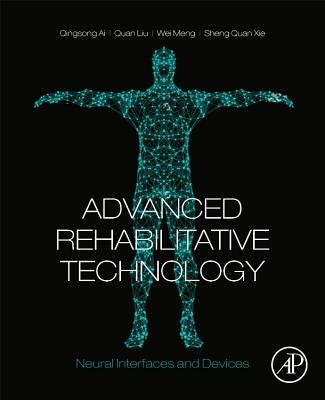
- We will send in 10–14 business days.
- Author: Qingsong Ai
- Publisher: Academic Press
- ISBN-10: 0128145978
- ISBN-13: 9780128145975
- Format: 19.1 x 23.5 x 1.5 cm, softcover
- Language: English
- SAVE -10% with code: EXTRA
Reviews
Description
Advanced Rehabilitative Technology: Neural Interfaces and Devices teaches readers how to acquire and process bio-signals using biosensors and acquisition devices, how to identify the human movement intention and decode the brain signal, how to design physiological and musculoskeletal models and establish the neural interfaces, and how to develop neural devices and control them efficiently using biological signals. The book takes a multidisciplinary theme between the engineering and medical field, including sections on neuromuscular/brain signal processing, human motion and intention recognition, biomechanics modelling and interfaces, and neural devices and control for rehabilitation.
Each chapter goes through a detailed description of the bio-mechatronic systems used and then presents implementation and testing tactics. In addition, it details new neural interfaces and devices, some of which have never been published before in any journals or conferences. With this book, readers will quickly get up-to-speed on the most recent and future advancements in bio-mechatronics engineering for applications in rehabilitation.
EXTRA 10 % discount with code: EXTRA
The promotion ends in 17d.05:55:26
The discount code is valid when purchasing from 10 €. Discounts do not stack.
- Author: Qingsong Ai
- Publisher: Academic Press
- ISBN-10: 0128145978
- ISBN-13: 9780128145975
- Format: 19.1 x 23.5 x 1.5 cm, softcover
- Language: English English
Advanced Rehabilitative Technology: Neural Interfaces and Devices teaches readers how to acquire and process bio-signals using biosensors and acquisition devices, how to identify the human movement intention and decode the brain signal, how to design physiological and musculoskeletal models and establish the neural interfaces, and how to develop neural devices and control them efficiently using biological signals. The book takes a multidisciplinary theme between the engineering and medical field, including sections on neuromuscular/brain signal processing, human motion and intention recognition, biomechanics modelling and interfaces, and neural devices and control for rehabilitation.
Each chapter goes through a detailed description of the bio-mechatronic systems used and then presents implementation and testing tactics. In addition, it details new neural interfaces and devices, some of which have never been published before in any journals or conferences. With this book, readers will quickly get up-to-speed on the most recent and future advancements in bio-mechatronics engineering for applications in rehabilitation.


Reviews